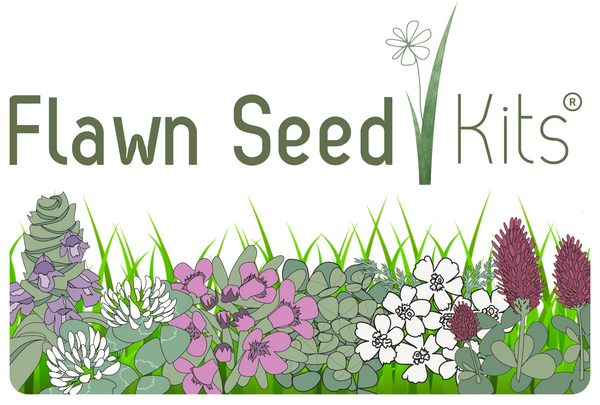
Preparing a Flowering Lawn for Winter in 3 Steps
Share
I know, I know, fall is a busy time of the year! Whether you’re trying to get a late season getaway in, watching school or professional sports, or wrapping up a DIY home project, you’re BUSY! So here are the three most important things you can do to make sure your flowering lawn makes it through the winter successfully.
#1 Water if Needed: In fall, as the nightly temperatures get lower, the growth of the grass and flowering lawn plant varieties will slow to a crawl. However, don’t hesitate to water once per week especially if you are not receiving one inch of rain each week. Without moisture in the soil the plants struggle to store up nutrients in their roots that allow them to survive the upcoming winter. This is incredibly important of you already have flower bulbs in your lawn or are planting them this fall.
#2 Mulch Mow Leaves: Trees are great! And I’ve always loved neatly raking up a giant leaf pile just to watch my kids, my dog, and eventually myself jump into it. Leaves left on the ground in a thick covering in the fall and through the winter can suffocate a flowering lawn and damage or kill off spots. It is very important to mulch mow leaves into tiny pieces that can easily decompose. If you mulch mow over the lawn in two directions but the ground is still covered, you will need to remove the excess leaves. Since leaves are full of beneficial nutrients, consider moving excess leaves to an area of your lawn where you have no leaves then scatter them out and mulch mow them to provide nutrients going into fall and coming out of spring.
#3 Mow at 3-3.5": If you live in an area where the ground freezes, make one final mowing at a height of about 3-3.5” once the flowering lawn has stopped growing. If you keep your flowering lawn un-mowed throughout the year you will need to step your mowing height down over a couple mowings in the last few weeks of fall. This is important to allow air and light to reach the soil surface to prevent the flowering lawn from excessive moisture buildup which can lead to molds and rotting of the vegetation.
Remember, no fertilizer applications are necessary for flowering lawns and can be detrimental in fall by forcing the plants to grow more stems and leaves rather than naturally storing up nutrients in their roots for winter.
Now you can get back to enjoying those beautiful fall colors and festivals and when you shiver and must retreat indoors just remember, spring is already on its way and there will be flowers, butterflies, and bees again soon. Happy growing!

2 comments
Thanks for your message Carrie. Yes, in January in Minnesota, I would recommend waiting until the soils have thawed before planting the seeds. The best time to do a dormant seeding is in the beginning of winter right after the soil freezes so that any snowfall protects the seeds from being moved by wind or rain and helps work them down to the soil level. All the best! Anthony
Hello,
I have a kit but haven’t planted yet. Should I wait until spring at this point?
I live in northern Minnesota.
Thanks,